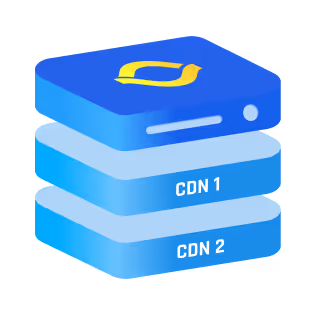The internet, a vast network connecting billions of devices worldwide, relies on a complex yet efficient system to translate the user-friendly domain names we frequently use into the numerical IP addresses that computers understand.
At the core of this system is a component known as DNS, or Domain Name System. Among the various types of DNS operations, one stands out for its critical role in ensuring that we reach our online destinations effectively: Recursive DNS.
What is Recursive DNS?
Recursive DNS is an element in the DNS, the system responsible for translating the familiar domain names we use into IP addresses that computers and networks can understand. When a user types a domain name into their browser or accesses any internet-based service, this action triggers what is known as a DNS lookup.
In this lookup, the Recursive DNS server acts as an intermediary, receiving the user's request and locating the specific IP address associated with the requested domain name. This process involves the Recursive DNS server communicating with various other DNS servers, each holding pieces of the overall DNS database, to compile the necessary information.
Query Handling
Recursive DNS queries different types of DNS servers – including root servers, top-level domain (TLD) servers, and authoritative name servers – to piece together the required information.
This process continues until the Recursive DNS server either successfully locates the exact IP address corresponding to the domain name or concludes that the record does not exist. In essence, Recursive DNS servers serve as diligent detectives in the digital world, navigating the complex web of DNS information to provide users with the keys they need to unlock their desired online destinations.
{{cool-component}}
How Recursive DNS Works
Recursive DNS operates as a behind-the-scenes guide that helps users reach their intended online destinations. Here’s a breakdown of how it works:
1. User Initiates a DNS Query
When you type a domain name (e.g., example.com) into your browser, your device sends a DNS query to a recursive DNS server. This server is often provided by your ISP or a third-party DNS service like Google Public DNS or Cloudflare DNS.
2. Checking the Cache
Before performing a full search, the recursive DNS server checks its cache to see if it has recently retrieved the IP address for the requested domain.
- If found: It immediately returns the IP address, speeding up the process.
- If not found: It proceeds to query other DNS servers to resolve the domain name.
3. Querying the Root Name Servers
If the recursive DNS server doesn't have the IP address cached, it sends a request to one of the root name servers. These are the highest-level DNS servers, responsible for directing queries to the appropriate Top-Level Domain (TLD) servers (such as .com, .org, or .net).
4. Contacting the TLD Name Servers
The root server responds by directing the recursive DNS server to the appropriate TLD name server based on the domain extension (e.g., .com).
For example.com, the query is forwarded to the .com TLD name server, which provides information on where to find the authoritative DNS server for that domain.
5. Querying the Authoritative Name Server
Next, the recursive DNS server contacts the authoritative DNS server for example.com.
This server holds the actual DNS records for the domain and provides the corresponding IP address.
6. Returning the IP Address to the User's Device
Once the recursive DNS server receives the correct IP address from the authoritative DNS server, it:
- Caches the response for future requests, reducing load times for subsequent queries.
- Sends the IP address back to the user's device, allowing the browser to connect to the website.
7. Website Loads for the User
Now that the browser has the IP address, it establishes a connection with the web server hosting the website, and the webpage loads.
The Need for DNS Resolution
Just as we use addresses to locate houses, the internet uses IP addresses to identify and reach various servers hosting websites. However, remembering the numerical IP addresses for all the websites we visit is impractical. This is where the Domain Name System (DNS) becomes indispensable.
DNS functions much like a dynamic, worldwide address book. Whenever you enter a website name into your browser, DNS translates that name into the corresponding IP address, the numerical identifier for the server where the website is hosted. This translation process, known as DNS resolution, is necessary for the seamless functioning of the internet.
Resolution Process
The resolution process involves several steps and different types of DNS servers. A user's request first reaches a recursive DNS server, which then queries other DNS servers in the hierarchy – such as root name servers, top-level domain (TLD) servers, and finally authoritative name servers – to find the specific IP address associated with the domain name. Each of these servers plays a unique role in helping to navigate this hierarchical structure and locate the correct IP address.
Without this efficient system, accessing websites would be a cumbersome process, requiring users to know and input exact IP addresses for every site they wish to visit. DNS resolution not only simplifies this process but also dynamically adapts to changes in IP addresses, ensuring that even if a website switches servers, users can still access it using the same domain name.
Recursive DNS vs. Authoritative DNS
These two types of DNS servers play distinct but complementary roles in the process of resolving domain names into IP addresses.
How Recursive and Authoritative DNS Work Together
While they serve distinct purposes, Recursive and Authoritative DNS servers are interdependent.
- Recursive DNS servers reduce the burden on authoritative servers by caching responses, enabling faster lookups for frequently accessed domains.
- Authoritative DNS servers ensure the accuracy of DNS records, providing reliable domain name resolution.
Together, these two types of DNS servers form the backbone of internet navigation, making it seamless for users to access websites by simply typing in a domain name.
{{cool-component}}
Public vs. Private Recursive DNS
Not all recursive DNS servers operate in the same way. Depending on who runs the server and how it is configured, recursive DNS can be categorized into two main types: Public and Private Recursive DNS.
1. Public Recursive DNS
Public recursive DNS servers are maintained by third-party providers and are available for free use by anyone. These DNS services are typically optimized for speed, security, and privacy.
✅ Examples of Public Recursive DNS Providers
- Google Public DNS (8.8.8.8 and 8.8.4.4)
- Cloudflare DNS (1.1.1.1 and 1.0.0.1)
- OpenDNS (208.67.222.222 and 208.67.220.220)
- Quad9 (9.9.9.9)
2. Private Recursive DNS
Private recursive DNS servers are typically used by organizations, ISPs, or large networks that require customized DNS resolution.
These servers are not publicly accessible and are configured to serve a specific network or group of users.
✅ Where Private Recursive DNS is Used
- Large enterprises for internal network resolution.
- ISPs that provide their own default DNS resolvers.
- Schools and businesses implementing content filtering and security policies.
Which One Should You Use?
- For everyday users, a public recursive DNS like Google DNS or Cloudflare is a great option for better speed, security, and reliability.
- For businesses and organizations, a private recursive DNS setup may be more beneficial for security, control, and internal resolution.
Conclusion
In essence, recursive DNS serves as the diligent intermediary that bridges user requests with the precise IP addresses they seek. It works in concert with Authoritative DNS, each playing a unique yet complementary role in ensuring seamless internet navigation. This synergy between Recursive and Authoritative DNS is what makes accessing the vast digital world as simple as typing a website name in a browser, an often overlooked marvel of modern technology.
FAQs
1. What Are the Common Performance Issues With Recursive DNS?
Recursive DNS servers can experience performance issues due to network congestion, high query loads, or slow responses from upstream DNS servers. If a recursive server lacks caching efficiency, it may lead to increased query resolution times. Security threats like DNS amplification attacks and misconfigurations can also impact speed and reliability.
2. How Does DNS Caching Impact Recursive DNS Performance?
DNS caching significantly improves performance by storing recently resolved domain names, reducing the need to query external DNS servers repeatedly. This speeds up future lookups and decreases latency. However, if cache entries become outdated (due to DNS record changes), users may experience incorrect or delayed responses until the cache is refreshed.
3. What Is a DNS Query Timeout in Recursive DNS?
A DNS query timeout occurs when a recursive DNS server fails to receive a response from an upstream server within a set timeframe. This can be caused by server unavailability, misconfigurations, or network delays. When a timeout happens, the recursive server may retry the request or return a "Server Unreachable" error to the user’s device.
4. What Is the Difference Between Recursive DNS and Forwarding DNS?
Recursive DNS servers handle full DNS resolution by querying multiple servers until they find the correct IP address. Forwarding DNS servers, on the other hand, simply pass DNS queries to another server (often an external resolver) for processing. Forwarding DNS is commonly used in organizations to centralize DNS management and enforce security policies.



.png)
.png)
.png)






